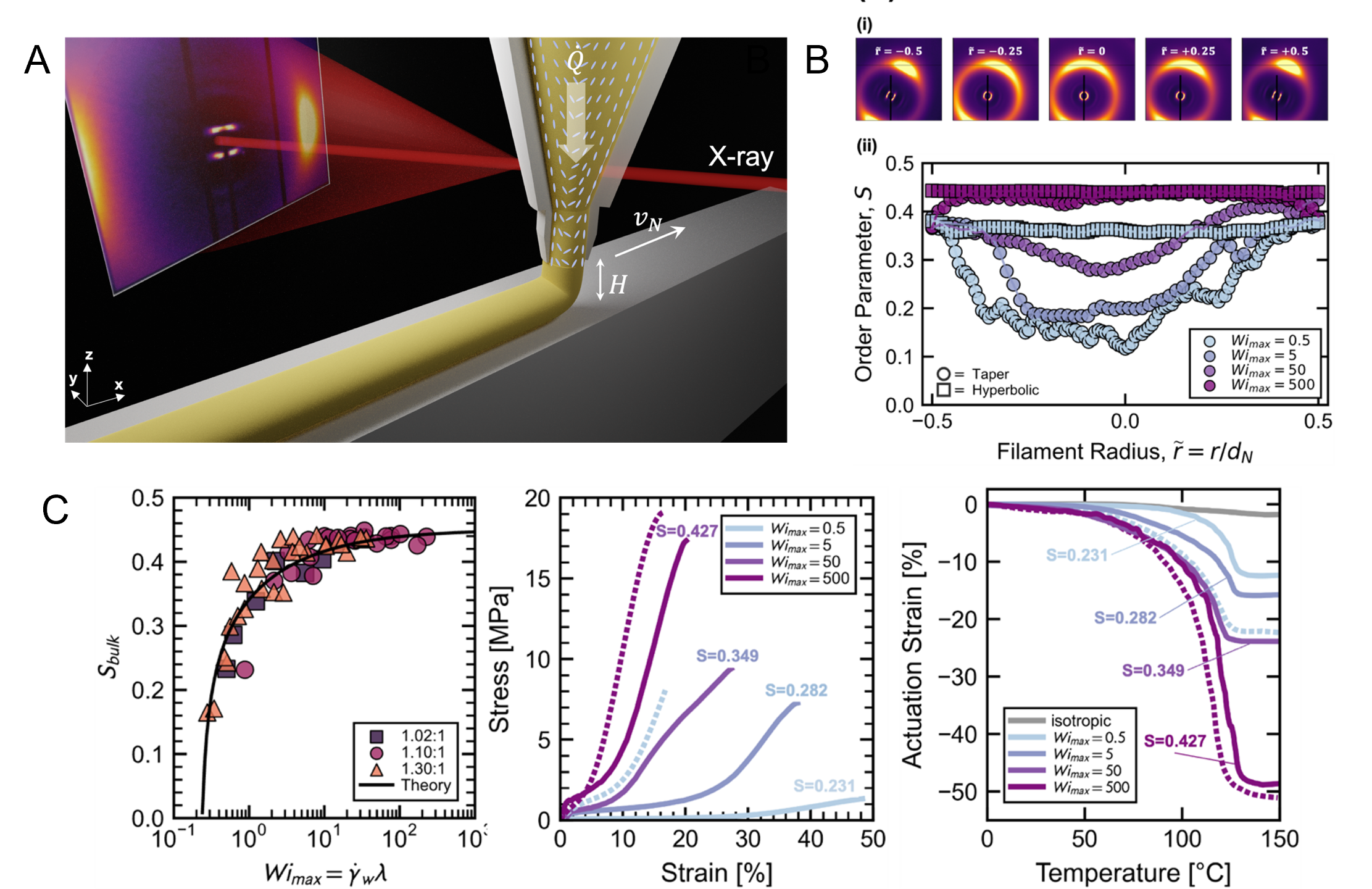Spatially Programmed Alignment and Actuation in Printed Liquid Crystal Elastomers

Aligned liquid crystal elastomers (LCEs) are soft materials that exhibit reversible actuation akin to human muscles when thermally cycled above their nematic-to-isotropic transition temperature. Lewis and collaborators studied the effects of LCE ink composition, nozzle geometry, and printing parameters on director alignment. By combining rheological measurements, in-operando microbeam X-ray scattering, and simulation, they show that the dimensionless Weissenberg (Wi) number, which characterizes ink flow through tapered and hyperbolic nozzles, directly correlates with director alignment in printed LCE filaments. By altering the value of Wi on-the-fly during printing, one can fabricate monolithic LCE actuators with spatially programmable alignment, stiffness, and actuation strains.
Article:
Encoding many properties in one material via 3D printing
Publication:
Telles, R., A. Kotikian, G. Freychet, M. Zhernenkov, P. Wąsik, B.M. Yavitt, J.L. Barrera, C.C. Cook, R. Pindak, E.C. Davidson, and J.A. Lewis, "Spatially programmed alignment and actuation in printed liquid crystal elastomers," Proceedings of the National Academy of Sciences 122 (3), e2414960122 (2025) ![]()
![]()

Jennifer A. Lewis (Material Science & Bioengineering), Caitlyn Cook (LLNL), and Ronald Pindak (BNL)
2024-2025 Harvard MRSEC (DMR-2011754)
